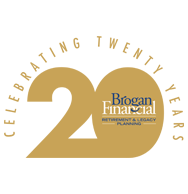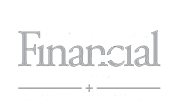A 7-Point Checklist to Reboot Your 401K (Part 1)

- August 2, 2017
- IRA's, 401(k)'s, and Retirement Accounts
Do you have an IRA or 401K? It’s probably one of your largest assets and could be the one thing that carries you through decades of retirement. Yet, it’s largely ignored. Today, 55 million Americans have an estimated $5.0 TRILLION socked away in 401K’s, but many don’t know what they are invested in or have a strategy for withdrawing their money. Neglecting your 401K could cost you a secure retirement.
However, there are things you can do to make the most out of the money invested in your 401K or other retirement account. Below, we’ve put together Part 1 of a 7-point checklist to help you reboot your 401K and, ultimately, make your money go further in retirement.
1. Know what investments are inside your 401K.
When you enroll through your workplace plan, most retirement accounts – such as 401Ks and 403Bs – have a limited menu of investment options. Employers typically provide little to no advice on how you should handle your investments, so they offer you simplified options with fewer choices. Furthermore, when you first enroll in a plan, or your plan changes investment alternatives, you are typically defaulted to a target-date fund unless you specify otherwise.
Target-date funds take your estimated retirement year and produce a mix of investments that balance financial risk. The closer you are to retirement, the more conservative the fund becomes.
Target date funds often present a real challenge because as you get closer to your retirement date, the funds typically balance risk by adding more traditional US bonds. Interest rates are historically low, even after the effect of the recent interest rate hikes from the Federal Reserve. Going forward, interest rates will either stay very low or will increase, meaning the bond market is highly likely to struggle to produce reasonable returns. If you are currently in a target-date fund, consider balancing your target-date fund with the other options available to you.
2. Identify the risk that you may be taking – especially with the current run up in the stock market – and make sure it aligns with your risk tolerance.
Matching up your portfolio’s overall risk with your appetite for loss becomes more and more important as you get closer to retirement. Most workers do not fully understand the risk they’re taking. We often forget the effect of bear markets, as the last one ended over eight years ago.
One of the quickest ways to derail a financial plan is to make emotional decisions based upon current market conditions. We should plan for risk before it happens, not while it’s happening.
When you evaluate the funds in your 401K, ask yourself how much you’re willing to see your portfolio decline the next time we see bear market. Then make sure you balance your investments accordingly.
While we know that past performance does not predict future results, we have very efficient tools to measure the risk in a portfolio. If you’d like us to measure the risk in your current 401K or other company plan, please contact us at (865) 862-6800 and we’ll provide a risk analysis.
3. Beware of fees! Over time, investment fees and other costs can decimate your returns.
Investment costs and fees can oftentimes cause a significant drag on the long-term performance of investments. With 401Ks and other company plans, the top driver of cost is typically the internal costs of the mutual funds in which you are invested, and they may range from 0.1% to as much as 2%. It is therefore critical that you carefully research your mutual fund options. If, for example, a fee for one of your mutual funds is 1% and the fund is not generating a good net return to you, then that fee drag could end up costing you significant amounts of money over the long haul.
However, we should focus on return NET of all costs, and not be too focused on just the costs. Keep in mind that the goal is to make money net of fees and net of taxes. If you focus too heavily on the fees involved, you could end up missing out on good options in your company plan.
Ultimately, it’s important to balance the costs of a particular fund with its past performance over a period of five or more years. You should then keep a close eye on your funds to ensure that the fees don’t create too significant of an investment drag in the future.
Continue to Part Two of a 7-Point Checklist to Reboot Your 401K.


